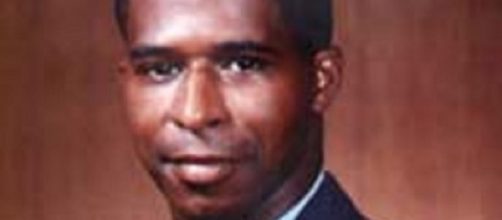“Hidden Figures” depicts the trials and triumphs of three African American women who overcame racial prejudice to help put the first American into orbit in the early 1960s. The movie has been universally acclaimed, if not by the Academy of Motion Picture Arts and Sciences, and has attracted wide audiences. But the women in the movie were not the only hidden figures from the early space program. One other such was Major Robert Lawrence who, but for a tragic accident, might have been the first African American to walk on the moon. Had he done so, he would have changed history as well as the attitudes of a wide segment of the American population about the race to the moon.
Most of the world remembers the moon landing as the one glorious thing that happened in the 1960s, a decade replete with assassinations, war, and civil strife. But the race to the moon was not universally popular while it was happening. Many in the African American community believed that the money NASA was spending on the moon race was at their expense. The singer Gil Scott-Heron composed an angry protest song about Apollo called “Whitey on the Moon”:
“A rat done bit my sister Nell
With Whitey on the moon
Her face and arms began to swell
And Whitey's on the moon”
The song goes on in much the same vein, contrasting the glories of the lunar expedition to the problems facing many in the black community during that era.
Surprisingly to many almost 50 years later, the Reverend Ralph Abernathy, who had become a civil rights leader in the wake of Dr. Martin Luther King’s assassination, led a protest march to the Apollo 11 launch with two mule-drawn wagons. They met with then NASA Administrator Thomas Paine to air their grievances. Paine noted that the problems of American society were not as susceptible to solutions as the moon landing was.
He stated, with some understanding, “--that if we could solve the problems of poverty in the United States by not pushing the button to launch men to the moon tomorrow, then we would not push that button.”
The first African American astronaut to work for NASA was Guy Buford, who flew during the shuttle era. However, another African American, an Air Force officer named Major Robert Lawrence, worked for the short-lived military space program in the mid-1960s.
When that program ended, most of the military astronauts transitioned to NASA, some going on to fly on the shuttle.
Unfortunately, Major Lawrence was killed in the crash of an F-104 fighter that he was using to teach a glide landing technique that he had pioneered a few years before the moon landing. A similar method was used to land the space shuttle decades later.
One of the haunting what-ifs of history imagines that Major Lawrence had lived and had joined NASA in the late 60s. Would he have gotten a chance to walk on the moon? If NASA had been smart, recognizing that Apollo was as much a political statement as it was a technological achievement, he might well have. Then what would Gil Scott-Heron have sung about? Maybe about a man who was on the moon that looked like him.
Maybe it’s time for Major Lawrence, an unsung hero of the space age, to get his own movie so that his story might be sung.

